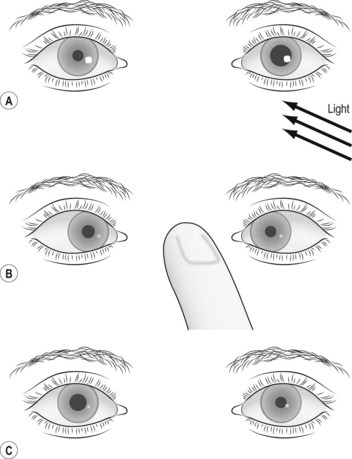40 Holmes–Adie syndrome
Salient features
Examination
• The pupil is large, regular, irregular, oval, or circular
• The pupil will react sluggishly or fail to react to light (Fig. 40.1). However, if a strong and persistent stimulus is used it can be shown that the pupil contracts excessively to a very small size and when the stimulus is removed it returns to its former size gradually—this is known as the ‘myotonic’ pupil
• Delayed constriction in response to near vision
• Delayed re-dilatation after near vision
• Accomodation impaired (pupillary constriction secondary to accommodation is relatively less affected, because the ciliary muscle has innervation that is approximately 30 times as great as that of the iris sphincter)
• There is segmental palsy and segmental spontaneous movement of iris (Lancet 2000;356:1760–1)
• Proceed to check the ankle jerks and tell the examiner that you expect them to be absent. (The diminished reflexes result from dysfunction of the large sensory 1A afferent fibres involved in the spinal reflex arc, which is consistent with an underlying neuropathy.)
Stay updated, free articles. Join our Telegram channel

Full access? Get Clinical Tree



